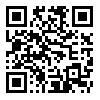Volume 9, Issue 1 (5-2020)
2020, 9(1): 23-31 |
Back to browse issues page
Download citation:
BibTeX | RIS | EndNote | Medlars | ProCite | Reference Manager | RefWorks
Send citation to:



BibTeX | RIS | EndNote | Medlars | ProCite | Reference Manager | RefWorks
Send citation to:
Studying the effects of adding CeO2 and CuO on electrical properties of lead free (Ba0.85Ca0.15)(Zr0.1Ti0.9)O3 piezoceramics. Iranian Journal of Ceramic Science & Engineering 2020; 9 (1) :23-31
URL: http://ijcse.ir/article-1-761-en.html
URL: http://ijcse.ir/article-1-761-en.html
Abstract: (3166 Views)
Lead-free (Ba0.85Ca0.15)[(Zr0.1Ti0.9)]O3 (BCZT) piezoceramics were synthesized using solid-state ceramic processing. In order to improve the electrical properties CeO2 and CuO additives/dopants were used and two methods were employed to introduce theses oxides; one, in which 0.1 mol.% CeO2 was mixed with the raw materials and the composition was balanced for A-site substitution (BCCe0.1ZT) and the other where CuO (0.1mol%) was added to the raw materials in the same manner (BCCu0.1ZT) before calcination. After calcination at 1250 °C, sintering additives of CuO and CeO2 (0.04 wt.%) were added to the synthesized powders. The latter was added to BCCu0.1ZT to produce BCCu0.1ZT+0.04Ce and the former was used for BCCe0.1ZT powder to make BCCe0.1ZT+0.04Cu composition. These four samples together with pure BCZT were sintered at 1350°C for 4 h. The microstructure and phase composition were investigated by scanning electron microscopy and X-ray diffraction. Polarization and strain measurements were done using a modified Sawyer-Tower circuit and an optical displacement sensor and temperature and frequency dependence of dielectric permittivity were measured using an impedance analyzer. Our results revealed that BCCuZT+ 0.04 CeO2 sample had the best dielectric properties of ɛr=3585, Pr=15 μC/cm2, Smax=0.047, and d33*=967 pm/V, which was better than pure BCZT at this temperature. Accordingly, these ceramics can be regarded as good candidates to replace previous dielectric materials.
| Rights and permissions | |
 |
This work is licensed under a Creative Commons Attribution-NonCommercial 4.0 International License. |


